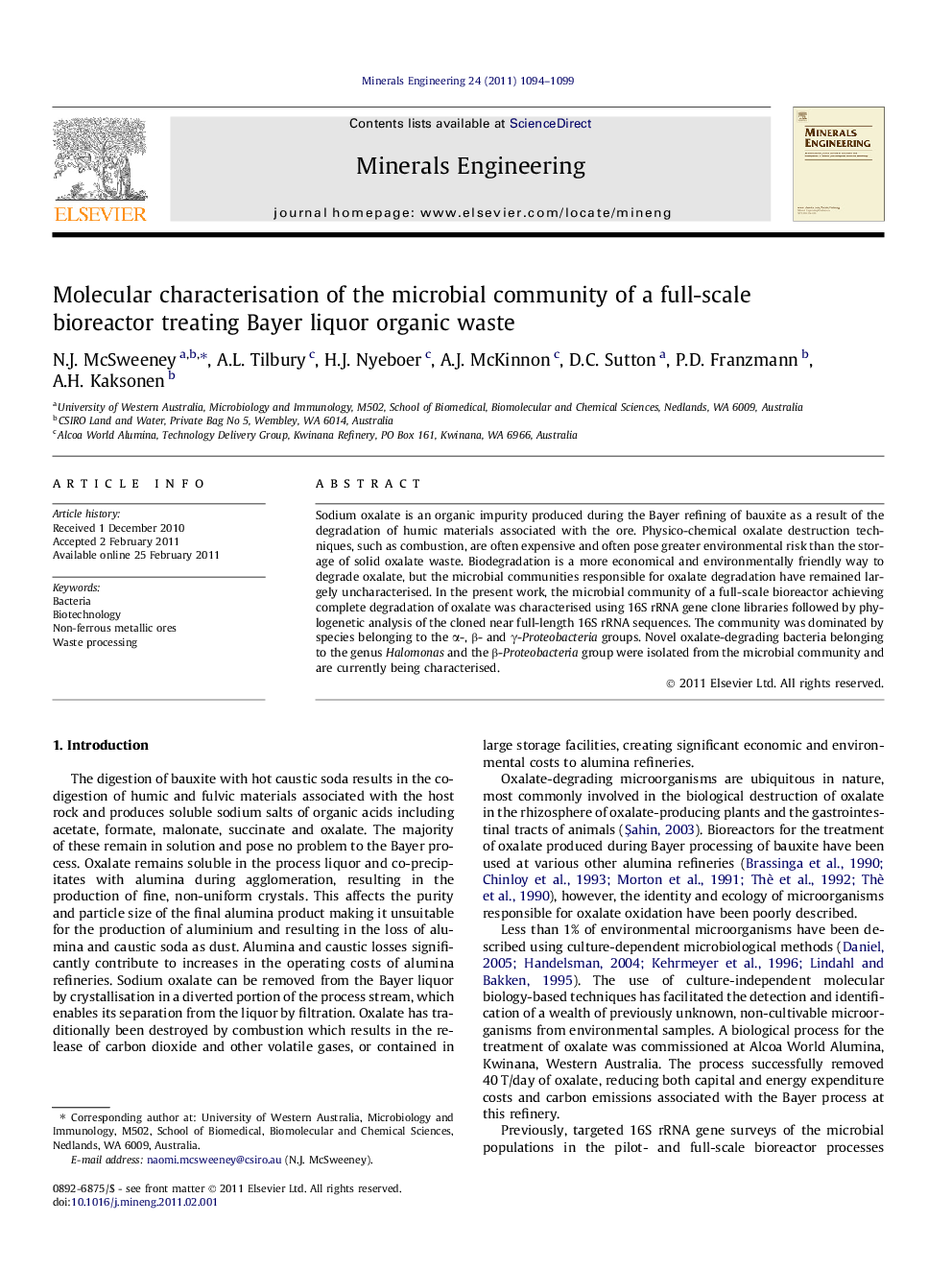| Article ID | Journal | Published Year | Pages | File Type |
|---|---|---|---|---|
| 233875 | Minerals Engineering | 2011 | 6 Pages |
Sodium oxalate is an organic impurity produced during the Bayer refining of bauxite as a result of the degradation of humic materials associated with the ore. Physico-chemical oxalate destruction techniques, such as combustion, are often expensive and often pose greater environmental risk than the storage of solid oxalate waste. Biodegradation is a more economical and environmentally friendly way to degrade oxalate, but the microbial communities responsible for oxalate degradation have remained largely uncharacterised. In the present work, the microbial community of a full-scale bioreactor achieving complete degradation of oxalate was characterised using 16S rRNA gene clone libraries followed by phylogenetic analysis of the cloned near full-length 16S rRNA sequences. The community was dominated by species belonging to the α-, β- and γ-Proteobacteria groups. Novel oxalate-degrading bacteria belonging to the genus Halomonas and the β-Proteobacteria group were isolated from the microbial community and are currently being characterised.
Research highlights► Oxalate-degrading bioreactors dominated by indigenous α-, β- and γ-Proteobacteria subgroups. ► Diversity of full-scale reactors was low and conserved for attached and suspended biomass. ► A novel genus of β-Proteobacteria capable of oxalate degradation was isolated. ► Findings consistent with published pilot-scale microbial communities.
